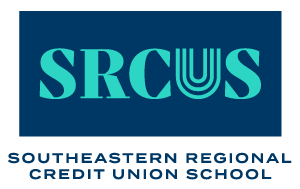EMV implementation – is it worth the cost?
A whitepaper discussing the implementation of EMV (Europay, MasterCard, and Visa) technology in the United States has been published by the Southeast Regional Credit Union Schools (SRCUS). The paper was authored by a team of third-year students in the SE CUNA Management School program comprised of Allison Beckham, ArrowPointe FCU (Lancaster, SC); Robyn Blaylock, Monroe Telco FCU (Monroe, LA); Tina Farris, Family Trust FCU (Rock Hill, SC); and Kevin Langford, Georgetown Kraft CU (Georgetown, SC). Completion of the written project and an oral presentation of the research report is a prerequisite for graduation from the program. This team of students received recognition at the 2016 SE CUNA Management School graduation ceremonies in June for exceptional work on their whitepaper.
EMV has come to the United States after being used in Europe for 2 decades. It promises reduced fraud and increased protection for both consumers and financial institutions. With fraud reaching record numbers in the recent years, a better solution for protection seems to be something that both consumers and financial institutions would be eager to adopt, but it has not been widely accepted. In this report, “EMV: Is it worth the cost?”, authors explore the reasons consumers and financial institutions alike have not bought into the technology and if the upgrade of cards is worth what it costs.
The paper provides a thorough overview EMV and the technology that makes it work, and concludes with a discussion of the pros and cons of implementation. Although the cost and ease of use raise serious issues for financial institutions who are going to upgrade and gives a good starting point for those who oppose, the authors posit that the pros do outweigh the cons.
As team member Tina Farris explains, “Scammers are constantly trying to find new ways to steal money. As the financial industry continues to progress into the 21st century, the EMV card is a huge step into the right direction for consumers. The initial implementation cost to the industry is huge; but overall, the impactwill minimize fraud losses for consumers and financial institutions. As technology continues to grow, it will be important for the financial industry to continue investing and developing new ways to stay ahead of the criminals. The EMV chip card is a step in the right direction.”
To access a complimentary copy of the white paper, please visit www.srcus.org/management-school/student-white-papers/.
